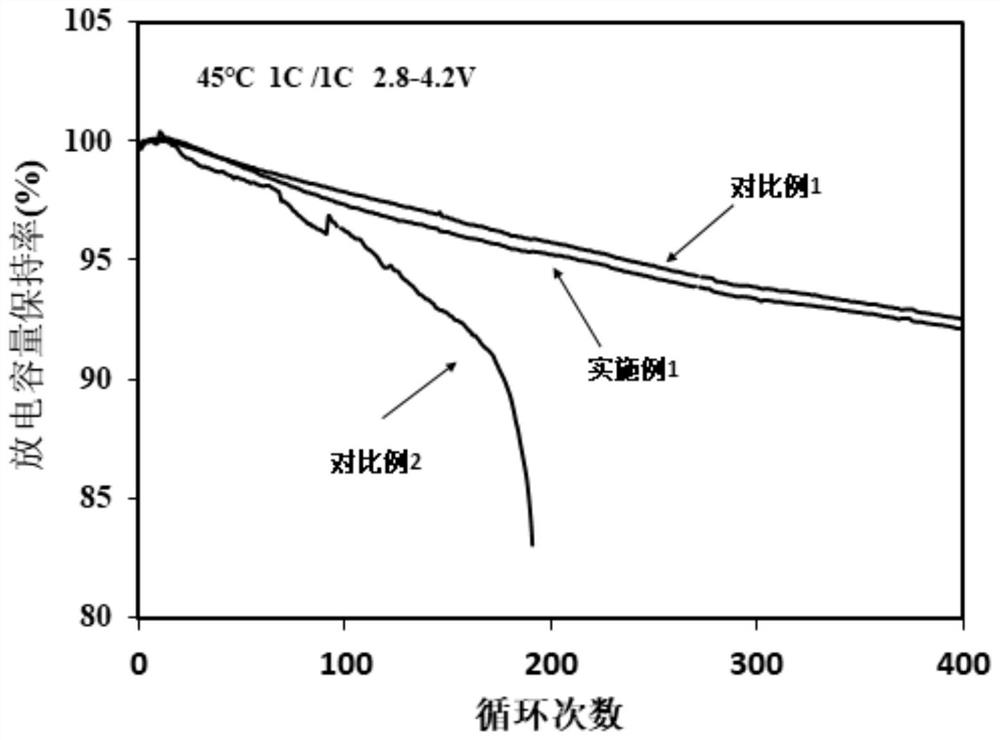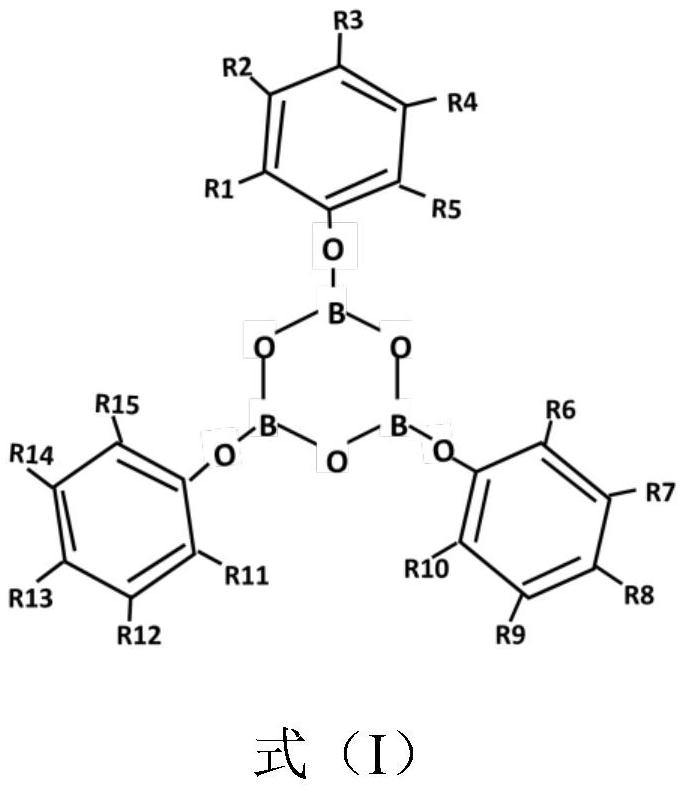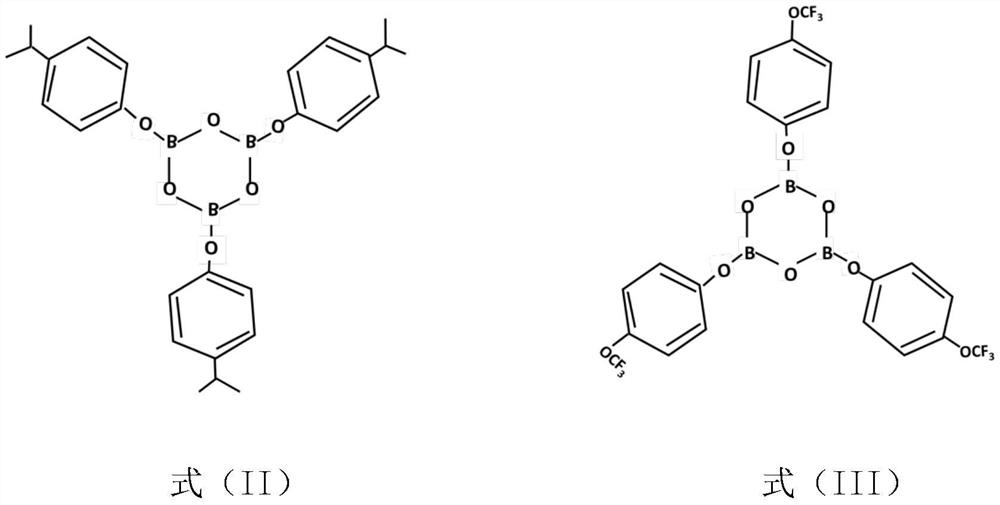Anti-overcharge electrolyte and lithium ion battery containing electrolyte
An overcharging and anti-overcharging technology, applied in the field of lithium-ion batteries, can solve the problems of increasing battery impedance, increasing lithium battery impedance, and damaging battery cycle performance, so as to achieve the effect of preventing overcharging performance and improving safety performance
- Summary
- Abstract
- Description
- Claims
- Application Information
AI Technical Summary
Problems solved by technology
Method used
Image
Examples
Embodiment 1
[0023] Example 1 Preparation of Electrolyte 1 and Experimental Battery 1
[0024] (1) Preparation of positive and negative electrodes:
[0025] Preparation of the positive electrode sheet: the positive electrode active material nickel cobalt lithium manganese oxide (NMC811), the conductive agent acetylene black, and the binder polytetrafluoroethylene are carried out according to the following mass ratio NMC811: acetylene black: polytetrafluoroethylene = 95: 2.5: 2.5 Mixing, adding N-methylpyrrolidone after mixing, fully stirring and mixing to form a uniform positive electrode slurry, which is evenly coated on a 12 micron thick aluminum foil, and the positive electrode sheet is obtained after drying.
[0026] Negative plate preparation: get negative active material artificial graphite, conductive agent acetylene black, binder sodium carboxymethyl cellulose (CMC), the mass ratio is artificial stone mill: acetylene black: CMC=95:2.5:2.5, first mix CMC Evenly disperse in deionize...
Embodiment 2
[0033] Electrolyte 2 and experimental battery 2 were prepared in the same manner as in Example 1, the only difference being that the mass fractions of lithium hexafluorophosphate, organic solvent, vinylene carbonate and the anti-overcharge additive shown in formula (II) were 14%, 79%, 2%, 0.5%.
Embodiment 3
[0035] Electrolyte 3 and experimental battery 3 were prepared in the same manner as in Example 1, the only difference being that the mass fractions of lithium hexafluorophosphate, organic solvent, vinylene carbonate and the anti-overcharge additive shown in formula (II) were 14%, 79%, 2%, 10%.
PUM
 Login to View More
Login to View More Abstract
Description
Claims
Application Information
 Login to View More
Login to View More - R&D
- Intellectual Property
- Life Sciences
- Materials
- Tech Scout
- Unparalleled Data Quality
- Higher Quality Content
- 60% Fewer Hallucinations
Browse by: Latest US Patents, China's latest patents, Technical Efficacy Thesaurus, Application Domain, Technology Topic, Popular Technical Reports.
© 2025 PatSnap. All rights reserved.Legal|Privacy policy|Modern Slavery Act Transparency Statement|Sitemap|About US| Contact US: help@patsnap.com



